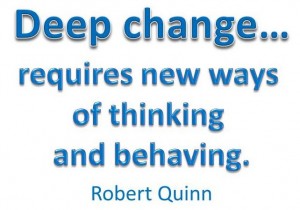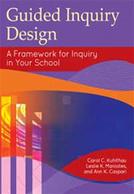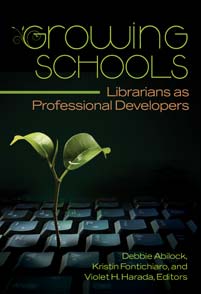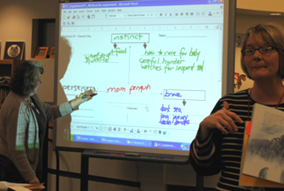 EdSurge is an organization that connects “the emerging community of edtech entrepreneurs and educators.” They recently published a graphic called “How Teachers Are Learning: Professional Development Remix.”
EdSurge is an organization that connects “the emerging community of edtech entrepreneurs and educators.” They recently published a graphic called “How Teachers Are Learning: Professional Development Remix.”
The graphic shows “old school” professional development, including all-day workshops, observations, and professional learning communities. (Personally, I wish they hadn’t included PLCs in the old school model…) In their new model, technology tools provide linkages to personalized professional development that meets the “just-in-time” needs of adult learners (teachers).
Lest we lose sight of the importance of the whole school culture, I believe this new model must be placed alongside an article published on EdSurge in April by Ben Wilkoff: “People Create Change Not Products.” Ben Wilkoff, who is the Director of Personalized Professional Learning for the Denver Public Schools, reminds us that it is the “people implementing tools that make or break it [professional development].”
I couldn’t agree more and encourage everyone to read his article. I know that while I have learned a great deal through technology tools, I have learned the most from coplanning and coteaching with colleagues in the same room, at the same time, working through challenges and sharing successes with real students in real time.
Technology-facilitated learning has a starring role in 21st-century education, but it can keep preK-12 students isolated from one another and educators isolated from colleagues. An individual learner, child or adult, simply cannot make the lasting changes we want to see in education and in the world that a collective of students or educators can.
If you believe that building a culture of collaboration can support people in making change, consider Ben Wilkoff’s current manifesto for professional development as you plan for the new school year:
• Community over Content
• Friends over Features
• Conversation over Credit
• People over Products
Works Cited
Edsurge. “How Teachers Are Learning: Professional Development Remix.” Edsurge. Web. 7 Aug. 2014. <https://www.edsurge.com/guide/how-teachers-are-learning-professional-development-remix>.
Quinn, Robert E. Deep Change: Discovering the Leader Within. San Francisco: Jossey-Bass, 1996. Print. (Image created with Microsoft PowerPoint)
Wilkoff, Ben. “People Create Change Not Products.” 16 Apr. 2014. EdSurge. Web. 7 Aug. 2014. <https://www.edsurge.com/n/2014-04-16-people-create-change-not-products>.








